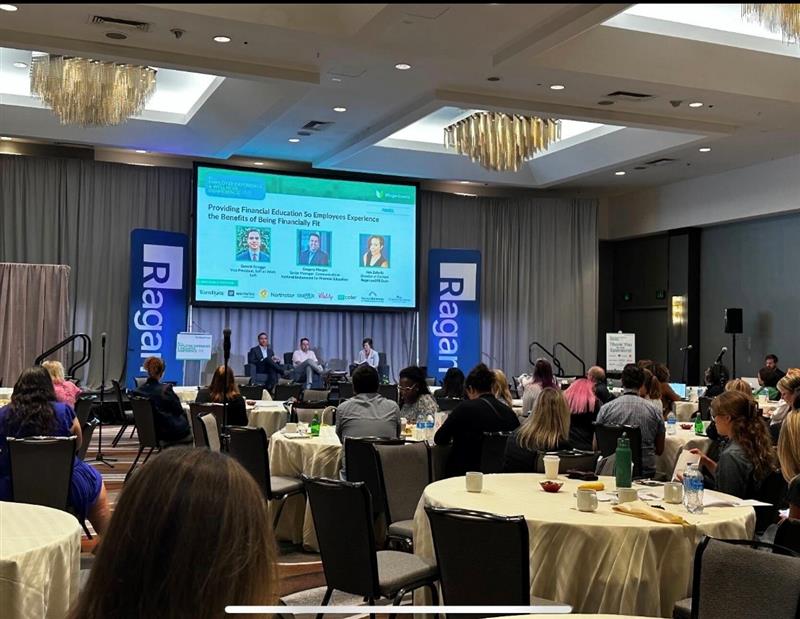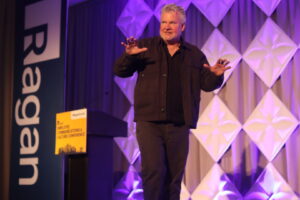The biggest takeaways from Ragan’s Employee Experience & Wellness Conference
Over three days new connections were formed, ideas were shared, and all learned new ways to look at wellness through a holistic lens.

Photo by Barrett Scruggs
This week, some of the top minds at the cross-section of communications, HR and employee experience gathered in the Mile High City to share their insights.
Over three days new connections were formed, ideas were shared, and attendees learned new ways to look at workplace wellness through a holistic lens that considers the whole employee.
There’s no way to fully capture the experience — you had to be there — but here are some of the most insightful takeaways from the conference.
1 . Wellbeing is no longer a benefit, a program, or a training — it is a strategic imperative and the groups that figure this out will have a massive advantage.
2. Employee resource groups can help build community and fulfill people inside and outside the office, in addition to supporting professional growth. But in order to do so, all should have a function of socializing your organization’s wellness benefits and programs.
3. Your future employees are today’s college students. It’s on you to ensure your work environment is set up to provide the next generation of employees with the same level of support and resources they are accustomed to.
4. Managers play a vital role in communicating about wellbeing to employees. Providing them with a personalized approach to do so in unique channels, like a manager newsletter, can give them unique language and strategy that’s tailored to their specific challenges and opportunities.
5. It’s critical to know your employee population — one-size-fits-all approaches tend not to work, especially seeing as different generations approach communication differently.
6. Technology doesn’t eliminate the need to connect person to person — and never will. But you can use tech to facilitate meaningful connections that resonate in real life.
7. When offering financial wellbeing education, it’s important to let your employees know that they’re not alone and that financial wellness is a lifelong journey. This will help destigmatize the conversation.
8. Seemingly minor moments of mindfulness and awareness from leadership can make a major difference. Modeling the behavior that you preach (like not emailing outside of office hours and staying offline during your PTO) will provide employees with a sense of psychological safety and let them know it’s OK to follow your lead.
9. Managers can sometimes feel that they were feeling as if they were asked to be therapists. Equipping them with manager-specific mental health training empowers them to manage their own boundaries and plans, and gives them the language to extend the principles to employees.
10. When working with leadership to create a culture of wellbeing and health, always start by defining your purpose. This can create and facilitate personal connections with employees, educate your leadership team about being a support system, ensure that staffers know they have options, and sometimes even save lives.
11. Benefit resource groups can help provide employees with invaluable support and make your benefits accessible to everone. Remember that inclusive benefits make a workplace more appealing to employees and recruits.
12. The biggest key to a wellbeing action plan is acting on it. Positive reinforcement and motivation will play a big factor in its continued success, too — the more open you are with your team about the steps in your plan, the more likely you are to see success.
13. Personalized approaches to upskilling are a major plus — an action plan that is unique to the employee is more likely to be successful.
If you weren’t in attendance, stay posted for our upcoming conference offerings.
Sean Devlin is an editor at Ragan Communications. In his spare time he enjoys Philly sports, a good pint and ’90s trivia night.







